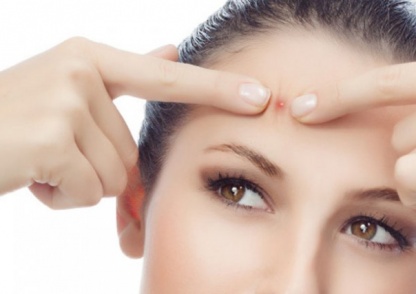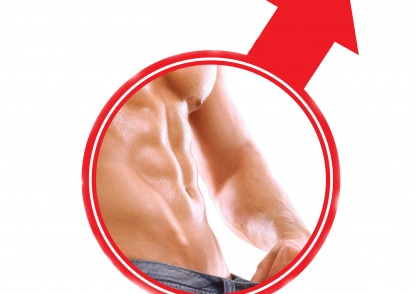Acne Vulgaris
What is acne vulgaris?
Acne is a very common skin condition that usually begins in adolescence. The hair follicle and its associated oil (sebaceous) gland become blocked and inflamed. Whiteheads, blackheads and inflamed pus-filled spots develop on the face, neck, back and chest because this is where oil glands are largest and most active.
What causes acne vulgaris?
- At around 8 years of age, the adrenal glands start to produce androgens (male hormone) and the amount produced gradually increases during puberty. The sebaceous glands respond to androgens by producing more sebum and sometimes whiteheads (closed comedones) may develop in young children.
- Sebaceous gland blockage. The skin cells lining the upper part of the hair follicle duct are not shed as normal but accumulate and form a plug (comedone). The oil is trapped behind it.
- Bacteria and inflammation. Increased numbers of acne bacteria (Propionibacterium acnes) accumulate in the duct and contribute to the inflammation that develops in the pimples.
- Genetics. Hereditary factors contribute, however it is not known exactly how this works.
- Stress. Adrenal glands produce more androgens when an individual is stressed. This can make acne worse.
- Certain diets may contribute to the development of acne, however good scientific data is lacking.
- In rare cases people working in certain industries may develop occupational acne where strict Work Health and Safety regulations have not been observed.
What does acne vulgaris look like?
Whiteheads are small, often tiny, non-inflamed spots under the skin surface while blackheads appear as an open pore with a black plug.

Whiteheads - Photo: Internet

Blackheads - Photo: Internet
Whiteheads and blackheads are usually the first lesions that develop and may be, but not always, followed by the development of red lumps and pustules.

Chin Acne - Photo: Internet
If the acne becomes more inflamed then larger, redder, deeper and tender nodules or cysts may develop. These very inflamed lesions often lead to scarring.
How is acne vulgaris treated?
There are many safe and effective acne treatments. However, it takes patience and persistence, at least 6 to 8 weeks, to see improvement in acne regardless of the treatment method (including topical treatment, antibiotics by mouth, hormonal therapy or systemic retinoids).
The aim of treatment is to:
- Reduce the number of comedones (blackheads and whiteheads)
- Reduce the inflammation (pimples and red bumps)
- Reduce the likelihood of permanent pigmentary changes (skin discolouration)
- Prevent scarring
As inflammation heals, the acne spots may appear pink, red or even purple and in some people they may leave a brown mark that usually, but not always, fades with time. In severe acne, scarring can occur because of deeper, more severe inflammation, nodules and cysts.
Acne is often characterised by flare-ups and acne free periods. This may continue for 3 to 5 years, but with consistent and persistent treatment the flare-ups can be minimised and long-term side effects reduced.
General measures
- Avoid applying greasy cosmetics or greasy sunscreens to acne prone areas.
- Wash the face with warm water and a soft face cloth (with a mild soap if desired) to remove oil. If this leaves the face still feeling oily, an over-the-counter acne wash or cleanser that contains salicylic acid, glycolic acid or benzoyl peroxide may be helpful.
- Avoid abrasive scrubs, toners and cleansers.
- Avoid squeezing and picking pimples as this irritates inflamed lesions and is more likely to lead to scarring.
- Avoid hot humid areas and tight clothing in acne prone areas.
- Follow a well-balanced, low GI diet combined with regular exercise.
- Avoid smoking.
Non-prescription products
Non-prescription products should be applied to the whole acne-affected area, not just the individual spots. These include:
- Benzoyl peroxide lotions and creams
- Azelaic acid preparations
- Glycolic acid preparations (10% or greater concentration is needed).
All of the above may cause irritation and dryness in some people. Reduce the frequency of application if this happens. Stop using the product if severe irritation occurs and see your doctor.
Prescription “leave-on products”
Prescription leave-on products are usually prescribed by your doctor or dermatologist when non-prescription products have not been effective. These include:
- Topical antibiotics (either alone or combined with benzoyl peroxide) to reduce inflammation in pimples or pustules
- Topical retinoids (either alone or combined with benzoyl peroxide) to help remove the skin plugs (whiteheads and blackheads). This is also known as a comedolytic treatment (“comedolytic” is the term used to describe a product or medication that prevents the formation of comedones such as whiteheads and blackheads).
These preparations may cause dryness in some people and may need to be applied less frequently. Stop using the product if severe irritation occurs and see your doctor.
Prescription oral preparations
Prescription oral preparations are prescribed by your doctor or dermatologist to suppress acne which has more widespread comedones and acne pimples that are more inflamed, deeper and larger. Oral prescription-only medications include antibiotics, the oral contraceptive pill and anti-androgens. A topical comedolytic treatment is usually prescribed.
Examples of antibiotics which may be prescribed include doxycycline, minocycline and others.
In women, hormonal therapy may be very effective. Examples of hormonal therapy include:
- The oral contraceptive pill (there are many different forms available)
- Anti-androgen therapy (such as spironolactone or cyproterone acetate)










